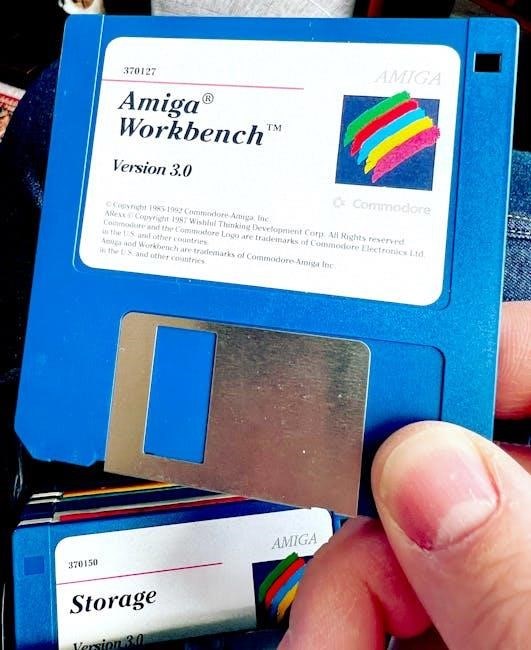hardcore paladin guide

Hardcore Paladin Guide: A Comprehensive Overview (12/11/2025)
Today, November 12th, 2025, this guide details premier Paladin builds – Fist of the Heavens, Avenger, Hammerdin, and Holy Fire – for hardcore Diablo 4 gameplay.
Season 12 offers a safer starter build, while rumors suggest the Paladin class is coming to Diablo 4, fulfilling a long-awaited archetype request.
Hardcore Paladin play in Diablo 4 demands meticulous planning and execution, differing drastically from Softcore. Permadeath looms, transforming every encounter into a potential finality. This necessitates a conservative approach, prioritizing survivability over sheer damage output, especially during the early stages.
The Paladin, with its inherent defensive capabilities – high block chance, auras like Holy Shield – presents a surprisingly robust choice for Hardcore. However, complacency is fatal. Understanding monster attack patterns, efficient potion usage, and awareness of Player Killers (PKs) are crucial.
This guide focuses on builds optimized for Hardcore survival, emphasizing safety nets and consistent progression. Expect a slower, more deliberate pace, but one that rewards patience and strategic thinking. Mastering the Paladin’s toolkit is key to conquering the challenges ahead.
Why Choose Paladin for Hardcore?
The Paladin excels in Hardcore due to its inherent defensive strengths. Unlike classes reliant on life leech or dodge, Paladins boast high block chance, substantial resistances, and powerful auras like Holy Shield, mitigating incoming damage significantly. This provides a crucial safety margin against one-shot mechanics common in higher difficulty levels.
Furthermore, the Paladin’s versatility allows for diverse build options, catering to different playstyles. From the tanky Avenger to the ranged Fist of the Heavens, adaptability is key. The class isn’t solely reliant on finding specific, rare items to become viable, offering consistent progression.
While not the fastest farmer, the Paladin’s survivability dramatically increases the chances of reaching the endgame, making it a pragmatic choice for players prioritizing longevity over speed.

Core Paladin Builds for Hardcore
We’ll explore five dominant Paladin builds for Hardcore: Fist of the Heavens, Avenger, Hammerdin, Holy Fire, and a viable Zealot option, maximizing survival.
Fist of the Heavens Paladin
The Fist of the Heavens Paladin excels in Hardcore due to its exceptional area damage and relative safety. This build centers around maximizing the effectiveness of Fist of the Heavens, a skill that rains down devastating holy bolts upon enemies.
Effective gear focuses on +Skills for Fist of the Heavens, Faster Cast Rate, and resistances. Survivability is bolstered by high block chance and a well-rolled Holy Shield. It’s considered an S-Tier build, meaning it’s among the best endgame options currently available for Hardcore Paladins.

Players should prioritize clear speed and the ability to quickly eliminate large groups of monsters, minimizing exposure to dangerous situations. Careful potion management is crucial, as with all Hardcore builds.
Avenger Paladin
Avenger Paladin builds are highly regarded in Hardcore for their potent single-target damage and respectable area-of-effect capabilities. This build revolves around the Avenger skill, enhanced by synergies and supporting gear. It’s also considered an S-Tier build, making it a top-tier choice for challenging Hardcore content.

Key gear components include items that boost Avenger damage, Faster Hit Recovery, and resistances. A strong focus on maximizing damage output is essential for quickly eliminating dangerous elite monsters and bosses.
Survivability relies on a combination of high life, resistances, and careful positioning. Players must be mindful of their surroundings and avoid being overwhelmed by large groups of enemies.
Hammerdin Paladin
The Hammerdin Paladin, a classic and consistently powerful build, remains a viable option for Hardcore play. This build centers around the Blessed Hammer skill, delivering substantial area damage and excellent clear speeds; It’s also categorized as an S-Tier build, indicating its effectiveness in endgame scenarios.
Essential gear focuses on increasing Blessed Hammer damage, Faster Cast Rate, and mana regeneration. Items providing significant resistances and life are crucial for survival in the unforgiving Hardcore environment.
Strategic positioning and careful monster management are vital, as the Hammerdin can be vulnerable to physical attacks. Utilizing Holy Shield and maximizing block chance further enhance survivability.
Holy Fire Paladin
The Holy Fire Paladin, another S-Tier build, excels in dealing consistent damage over time. This build revolves around the Holy Fire skill, igniting enemies and causing continuous burning damage. It’s particularly effective against tightly packed monster groups, making it ideal for clearing areas quickly.
Key gear components include items that amplify Holy Fire damage, increase fire resistance (for yourself!), and provide ample mana regeneration. Prioritizing survivability through resistances and life is paramount in Hardcore mode.
Careful positioning is crucial, as Holy Fire requires enemies to remain within the flames. Utilizing auras like Redemption and Salvation further enhances both damage and survivability.
Zealot Paladin ‒ A Viable Option
Although not consistently ranked as top-tier, the Zealot Paladin presents a surprisingly viable option for Hardcore play, particularly for players favoring a fast-paced, melee-focused style. The core of this build lies in the Zeal skill, allowing for rapid consecutive attacks.
Success hinges on maximizing attack speed, critical strike chance, and life leech. Gear should prioritize these stats alongside defensive capabilities like resistances and armor. A well-geared Zealot can quickly dispatch most enemies before taking significant damage.
However, it demands precise positioning and awareness, as Zealots are vulnerable to being surrounded. Careful potion management and strategic use of defensive auras are essential for survival.

Essential Skills and Stats
Prioritize skills like Holy Shield, Fanaticism, and appropriate elemental auras for survival. Vital stats focus on strength, vitality, and resistances for hardcore viability.
Key Skills for Hardcore Survival
For hardcore Paladin survival, mastering key skills is paramount. Holy Shield is non-negotiable, providing a substantial block chance and damage reduction, crucial against unexpected attacks. Fanaticism significantly boosts attack speed and damage, accelerating clear speeds while maintaining safety.
Consider Redemption for emergency healing, though reliance on it is discouraged. Holy Bolt and Holy Fire, depending on your build, offer ranged damage options for safer engagements. Concentration is vital for maximizing aura effectiveness and minimizing mana issues.
Don’t underestimate the power of Battle Orders for increased life and mana, bolstering survivability. Skill allocation should prioritize these defensive and utility skills before maximizing offensive capabilities, ensuring a resilient character capable of weathering hardcore’s challenges.
Vital Stats: Prioritization for Paladins
For hardcore Paladins, stat prioritization differs significantly from softcore. Life is king; maximizing hit points is the foremost concern, mitigating one-shot potential. Resistances are crucial, aiming for 75% in all elements to avoid devastating elemental damage.
Strength is important for equipment, but don’t over-invest if it compromises survivability. Dexterity contributes to block chance, a vital defensive layer, but prioritize life first. Energy should be sufficient for aura maintenance, but mana potions are a viable alternative.

Vitality should receive the bulk of stat points, ensuring a substantial life pool. Ignore stats like Faster Hit Recovery and Faster Cast Rate until survivability is firmly established, focusing solely on staying alive.
Aura Selection: Synergy and Safety
Holy Shield is paramount for hardcore Paladins, dramatically increasing block chance and providing substantial damage reduction; Conviction, while boosting damage, carries risk due to mana drain; careful management is essential. Resistance Auras offer team support but are less vital for solo hardcore play.
Fanaticism provides an offensive boost, but its mana cost can be prohibitive. Holy Freeze can control crowds, creating safer engagement scenarios, but doesn’t directly enhance survivability. Consider the trade-offs between offensive power and defensive stability.
Safest is typically Holy Shield, supplemented by a well-managed Conviction when appropriate, prioritizing consistent survival over maximizing damage output in dangerous environments.

Gear and Equipment
Gearing for hardcore Paladins involves a progressive approach: early-game focus on survivability, mid-game balancing stats, and endgame chasing powerful runewords and unique items.
Early Game Gear Progression
Initially, prioritize defense and resistances. Look for items with + to all Resistances, Life, and Mana. A solid helm with life leech is crucial for sustain. Early runewords like Stealth (TalEth) offer valuable benefits for safe leveling, enhancing your mobility and survivability.
Focus on finding or crafting armor with decent defense and available sockets. Shields are paramount; prioritize blocking and resistances. Don’t underestimate the power of magic find for quicker upgrades, but survival always comes first in hardcore.
Weapon choices should lean towards faster attack speeds for quicker monster elimination. Consider a budget-friendly unique weapon with life steal. Remember, consistent damage output minimizes exposure to danger. Prioritize upgrading gear incrementally as you level.
Mid-Game Gear Goals
As you progress, aim for gear that significantly boosts your core build’s damage and survivability. Runewords like Spirit (TalThulOrtAmn) in your shield dramatically improve mana regeneration, essential for aura maintenance. Prioritize finding a good quality Monarch shield for maximum blocking potential.
Armor should focus on resistances, life, and Faster Hit Recovery (FHR). Look for items with +Skills to enhance your chosen Paladin build. Begin accumulating charms – Grand Charms with life or resistances are invaluable.
Weapon upgrades should target increased damage and life steal. Consider a Berserker Axe or a decent unique Paladin weapon. Don’t neglect your mercenary; equipping them with a good weapon and armor is crucial for added damage and survivability.
Endgame Gear: The Holy Grail
The ultimate goal is assembling a near-perfect gear set. For many builds, Enigma (JahIthBer) is a cornerstone, providing teleport for unmatched mobility and safety. A Grief (EthTirLoMalRal) runeword in your weapon delivers massive damage, particularly for melee-focused Paladins.
Defensive layers are paramount: a Fortitude (ElSolDolLo) armor boosts damage and resistances. Maximize resistances with charms and gear, aiming for 75% in all categories. Consider a Spirit shield with high block chance.
High-end jewelry should focus on +Skills, Faster Cast Rate (FCR), and life. Perfecting your gear is a long grind, but essential for conquering the most challenging content in hardcore.
Runewords for Hardcore Paladins
Runewords are critical for survival and damage output. Enigma (JahIthBer) remains a top choice for teleportation, offering unmatched safety and mobility. Fortitude (ElSolDolLo) provides substantial damage and resistances, crucial for tanking. For zealots, Grief (EthTirLoMalRal) delivers immense physical damage.
Defensively, Spirit (TalThulOrtAmn) in a shield maximizes block chance and provides FCR. Consider Stone (ShaelUmPulLum) for added resistances and physical damage reduction.
Early game, Insight (RalTirTalSol) in a polearm provides mana regeneration. Carefully plan your runeword choices, prioritizing both offense and robust defense for hardcore viability.

Hardcore Specific Strategies
Hardcore demands caution; prioritize monster avoidance, efficient potion use, and awareness of potential player killers to maximize your Paladin’s survival chances.
Safe Leveling Techniques
Leveling a Hardcore Paladin requires a conservative approach. Early on, focus on areas with lower monster density and avoid high-threat zones. Utilize ranged skills like Holy Bolt or Blessed Hammer to engage enemies from a safe distance, minimizing direct confrontation.
Prioritize quests that offer significant experience rewards and avoid unnecessary risks. Carefully scout ahead before entering new areas, and be mindful of potential ambushes. Consider utilizing the Town Portal frequently to return to town for healing and repairs, reducing the chance of a fatal encounter.
A slower, more deliberate pace is crucial for survival in Hardcore mode; rushing can lead to preventable deaths. Remember, consistent progress is better than a reckless attempt at speed leveling.
Monster Avoidance and Awareness
Survival in Hardcore hinges on astute monster awareness. Learn monster attack patterns and abilities to anticipate threats. Prioritize avoiding dangerous elite packs, especially those with deadly modifiers like “Execute” or “Desperate Measures.” Utilize the minimap to scan for approaching enemies and potential hazards.
Don’t hesitate to bypass challenging areas entirely, especially during early levels. A small experience loss is preferable to a character death. Pay close attention to the environment; narrow corridors and enclosed spaces increase vulnerability.
Always be prepared to retreat – Town Portal is your lifeline. Recognizing and avoiding dangerous encounters is paramount to long-term Hardcore success.
Potion Management in Hardcore
Potion efficiency is critical in Hardcore. Always carry a full stack of health and mana potions, prioritizing health as a Paladin. Bind potion usage to a readily accessible key for quick reactions. Don’t hoard potions unnecessarily; use them proactively before reaching critical health or mana levels.
Understand potion cooldowns and plan accordingly. Consider investing in items or skills that reduce potion cooldowns. Resist the urge to rely solely on potions; focus on building defensive layers through gear and skills.
Efficient potion use extends your survivability, allowing you to overcome challenging encounters and avoid preventable deaths.
Dealing with Player Killers (PK)
Player Killers (PKs) pose a unique threat in Hardcore. Prevention is key: avoid high-traffic areas, especially while leveling or carrying valuable items. If confronted, assess the situation quickly; Is escape possible? If so, prioritize it immediately.
Don’t engage unless you have a clear advantage. A Paladin’s survivability doesn’t guarantee victory against a prepared PK. Consider recording encounters as evidence for potential reports. Communicate with other players; a warning system can help avoid ambushes.
Remember, losing items is frustrating, but your life is paramount. Accept that PKs exist and adjust your gameplay accordingly.

Advanced Paladin Tactics
Mastering immunities, maximizing block chance, and utilizing Holy Shield effectively are crucial for endgame Paladin success in hardcore, alongside mercenary optimization.
Understanding Paladin Immunities
Paladins, while durable, aren’t immune to everything. Recognizing enemy immunities is paramount in hardcore. Common resistances to watch for include physical, fire, lightning, and poison. Ignoring these can lead to swift death.
Holy Fire Paladins, for example, must avoid enemies immune to fire. Similarly, Hammerdin builds struggle against physical immunity.
Clever Paladin players utilize break immunities through items like the Infinity runeword (for monsters) or skills that temporarily remove resistances.
Knowing which immunities your build can bypass, and proactively avoiding those it cannot, is a core skill for hardcore survival. Always scout ahead and assess threats before engaging!
Maximizing Block Chance
In hardcore, maximizing block chance is crucial for Paladin survivability. Aim for 75% block chance, the soft cap, as this significantly reduces incoming physical damage. This requires investment in shields with high block percentages and the ‘Defiance’ aura.
Shields like Heraldic or ancient shields are excellent early choices. Later, consider upgrading to a Paladin-specific shield with superior stats. Don’t neglect the importance of a shield with appropriate resistances.
Beyond the shield, items offering ‘increased block chance’ are valuable; Remember, diminishing returns apply beyond 75%, so prioritize other defensive stats after reaching that threshold.
High block chance buys you time to react, chug potions, and escape dangerous situations – vital in hardcore mode.
Effective Use of Holy Shield
Holy Shield is a cornerstone of Paladin defense in hardcore, providing a substantial damage reduction and the chance to prevent incoming attacks. Maintaining Holy Shield uptime is paramount; manage your mana efficiently to avoid lapses in protection.
Invest in mana regeneration gear – amulets, rings, and charms – to sustain Holy Shield continuously. Consider skills and items that reduce mana cost. Prioritize mana leech as a secondary source of sustain.
The aura’s defensive bonus stacks with block chance and resistances, creating a formidable defense. Combine it with a high-quality shield for maximum effectiveness.
Remember, Holy Shield doesn’t make you invincible; it mitigates damage, allowing you to survive longer and react to threats more effectively in the unforgiving hardcore environment.
Mercenary Selection and Gear
For hardcore Paladins, the Act 2 Nightmare Defensive (Holy Freeze) mercenary is generally preferred. The slowing aura significantly enhances survivability by controlling enemy aggression and providing breathing room.
Gear your mercenary to maximize survivability. A high-defense ethereal armor, like Treachery, is crucial. Prioritize items with life leech and resistances to keep them alive.
Infinite life potions are invaluable for mercenary sustain, especially during challenging encounters. A good weapon, such as a Berserker Axe or Insight runeword, boosts damage output.
Remember, your mercenary is a vital asset; their death can quickly lead to your own demise in hardcore. Invest in their gear and keep them well-supplied.

Resurrection and Recovery
Death is inevitable in hardcore. Minimize losses by careful planning, learning from each mistake, and accepting that resurrection isn’t always possible.
Accepting the Inevitable: Death in Hardcore
Hardcore play demands a mental fortitude beyond standard gameplay. Death will occur, even with meticulous planning and skillful execution. Accepting this reality is paramount to long-term success and enjoyment. Don’t view death as a failure, but as a valuable, albeit harsh, learning experience.
Resist the urge to become overly cautious to the point of stagnation. Calculated risks are necessary for progression, and sometimes, despite your best efforts, unfavorable circumstances will prevail. Understand that losing a character is part of the hardcore cycle, fostering a deeper appreciation for each successful run and a more pragmatic approach to future endeavors.
Prepare yourself mentally for the reset, and focus on what you’ve learned from the previous attempt.
Minimizing Losses After Death
After an inevitable demise in hardcore, swift action can mitigate losses. Prioritize stashing valuable items – runes, high-rarity bases, and unique charms – frequently. Utilize a mule character for secure storage, transferring items regularly to avoid complete loss upon death.
Remember that gold and experience are forfeited, but the knowledge gained is invaluable. Analyze the circumstances leading to your character’s fall; identify weaknesses in your build, gear, or playstyle.
Don’t dwell on the setback. Instead, use the experience to refine your approach, optimize your gear, and prepare for a more successful subsequent attempt. Efficient recovery relies on proactive preparation and post-mortem analysis.
Learning from Mistakes
Hardcore Paladin play demands rigorous self-assessment. Each death presents a crucial learning opportunity. Scrutinize the events leading to your character’s demise – was it a miscalculated engagement, a lack of awareness, or insufficient resistances?
Record these failures, not as defeats, but as data points. Identify patterns in your deaths; are you consistently struggling against specific monster types or in certain areas? Adjust your build, gear, or tactics accordingly.
Embrace a mindset of continuous improvement. Share experiences with the hardcore community, seeking feedback and alternative strategies. Mastering hardcore isn’t about avoiding death, but about minimizing its frequency through informed adaptation.















































































